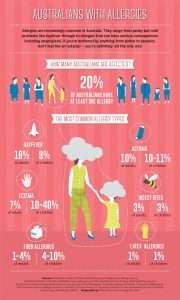Winter offers little respite to people vulnerable to skin allergies, asthma, hay fever, and other forms of skin allergies. While the levels of common allergens at home such as dust and dust mite decline during the winter season, there is closer contact with these allergens, causing an allergic person to display continued allergy symptoms.
 Allergy symptoms may actually worsen in winter
Allergy symptoms may actually worsen in winter
If you suffer from summer allergies, chances are that you will develop allergies during the colder months as well.
Here are some of the factors at home that lead to allergic reactions during winter
- Rugs, bedding, soft toys, and long-stored woollen clothing are all breeding grounds for dust mites.
- Creating an artificial warmer climate the home may be worsening your allergy woes.
- Ducted heating circulates fine allergic dust throughout the house. Poor ventilation, with windows closed most of the time encourages growth of mould, which is another common cause of skin and breathing allergies.
- Lower exposure to sunlight and lesser swimming in seawater can worsen eczema in some people.
- In winters, pets spend more time indoors leading to proliferation of pet dander. In addition, we tend to cuddle up with our pets a lot more, increasing our exposure to pet allergens.
- Decaying leaves and yard waste create a breeding ground for mould and mildew. These damp irritants may enter your home by clinging on to shoes and clothes.
Apart from seeking advice from an allergist on suitable allergy treatment, by taking the following steps reduce exposure to allergens and minimises allergy symptoms during winter –
1. Reduce indoor allergens by vacuuming and dusting more during winter.
2. If possible, stay indoors when the cold winds are blowing.
3. Wash your hands and face several times a day and bathe regularly to reduce the number of allergens on you. In fact, a hot bath will help ease allergy symptoms like nasal congestion.
4. Wash pillows and sheets weekly in hot water.
5. Use natural cleaning products to minimise indoor chemical pollution.
6. Air doonas and blankets once a week when the sun is out.
7. Use dust mite covers to control presence of dust mites in your bedroom.
8. Lack of humidity can irritate the eyes and nose. The relative humidity levels indoors should be no lower than 30% and no higher than 55%. Maintain humidity by using a dehumidifier.
9. Clean the fins and vents in the heater units installed at home.
10. Regardless of the season, if you are allergic, avoid getting cosy with your pets or the neighbour’s dog.
Pay attention to your allergies during the winter season, as you would any other time of the year. Evidence recommends that reducing exposure to inhalant indoor allergens can improve asthma and allergy control and notes that a multifaceted approach is required – single steps to reduce exposure are generally ineffective
HOW TO
Australians with Allergies
You are not alone with winter allergies. As per the Australian Society of Clinical Immunology and Allergy, 20% of Australians have at least one allergy. Here is an informative infographic on common allergies affecting Australians.

Towards healthier living Carol Parr ♥
As Building Biologists, we have acquired knowledge of adverse health effects and recommend effective strategies to reduce occupants’ exposure by eliminating and controlling as many sources of pollutants in order to create healthy indoor living environments that are as exposure-free and natural as practically possible.
Author
-
We’re glad you’re here. We’re Carol and Tony, founders of one of the longest running Healthy Home Blogs in the world, Mitey Fresh Australia. We’ve been on this journey for the last 25 years and are passionate about helping families sift through health hazards and triggers like allergens, mould, water damage, chemicals and EMFs, to get clarity about what’s toxic and what’s not so they can create a healthy and happy home for their family they love. Each month, people visit this blog seeking focus on the health and wellbeing of their loved ones, sustainable and effective practice tips and guides, to help create and manage healthier indoor spaces, improve the built environment that is pleasing to the senses and support healthy living and nature, every day. Starting this blog was to help change people’s lives, one family at a time, and we can’t wait to share how its allowed us to stand next to you and show you how interpreting these synergies between buildings and the environment they are built in will impact upon the health and well-being of those who occupy them. Find out more about Healthy Homes and what this blog can do for you!





